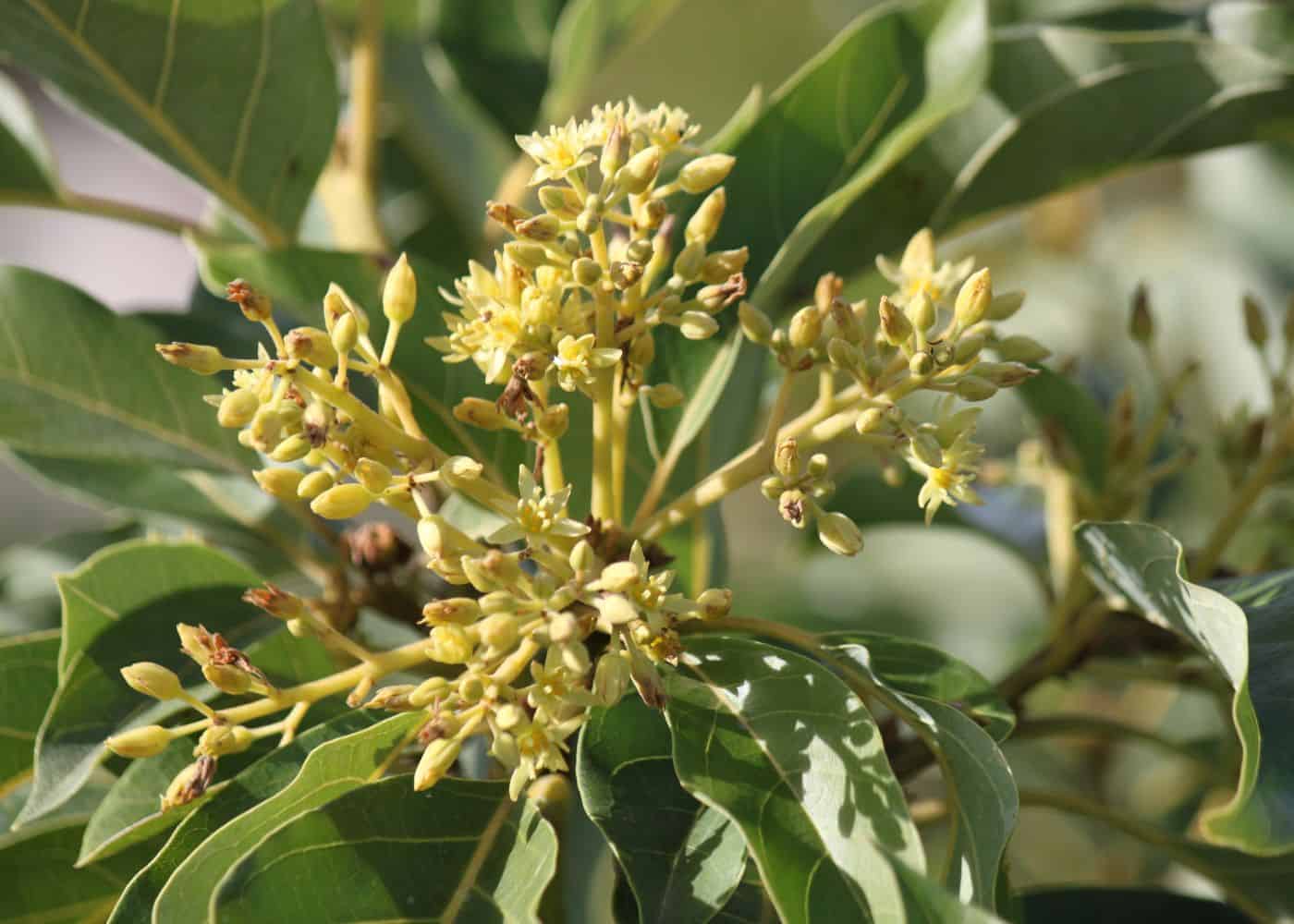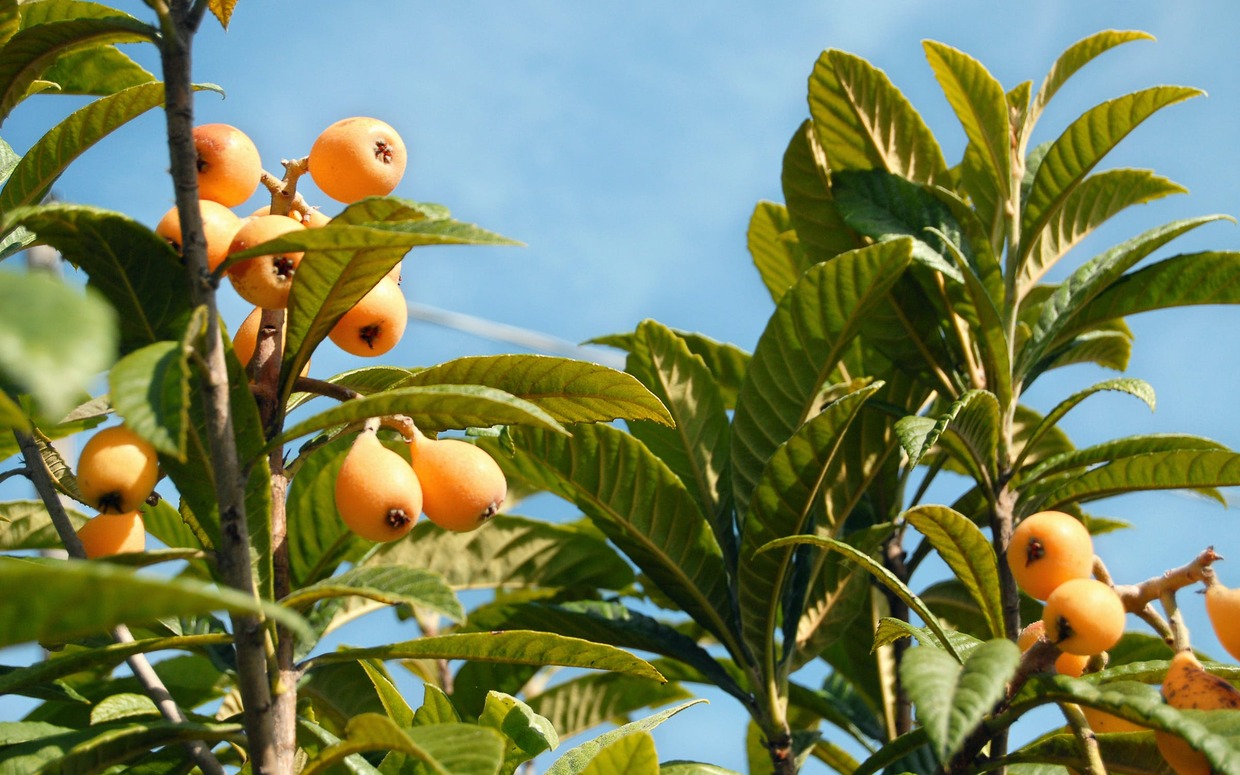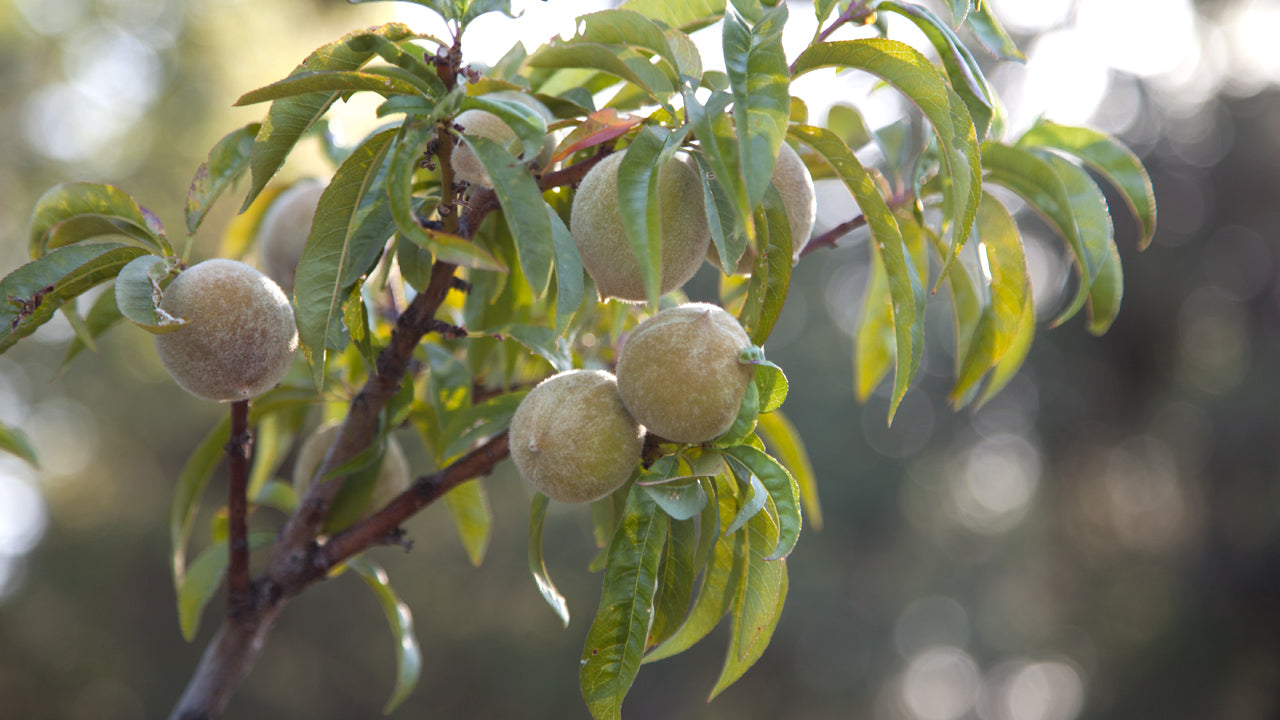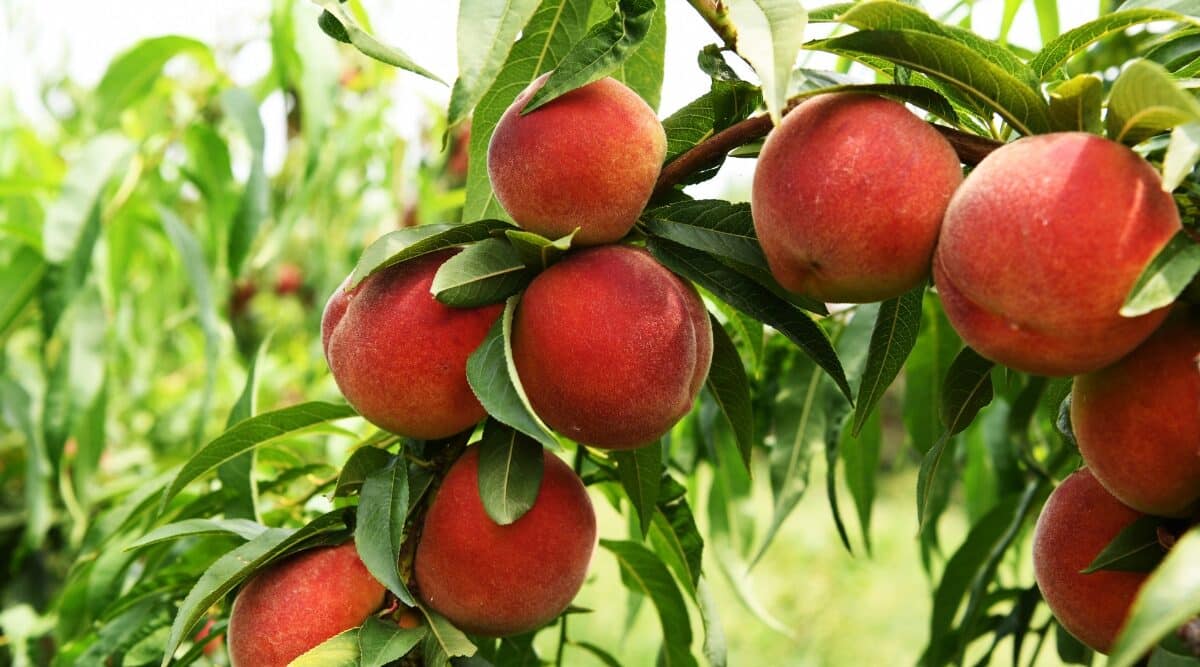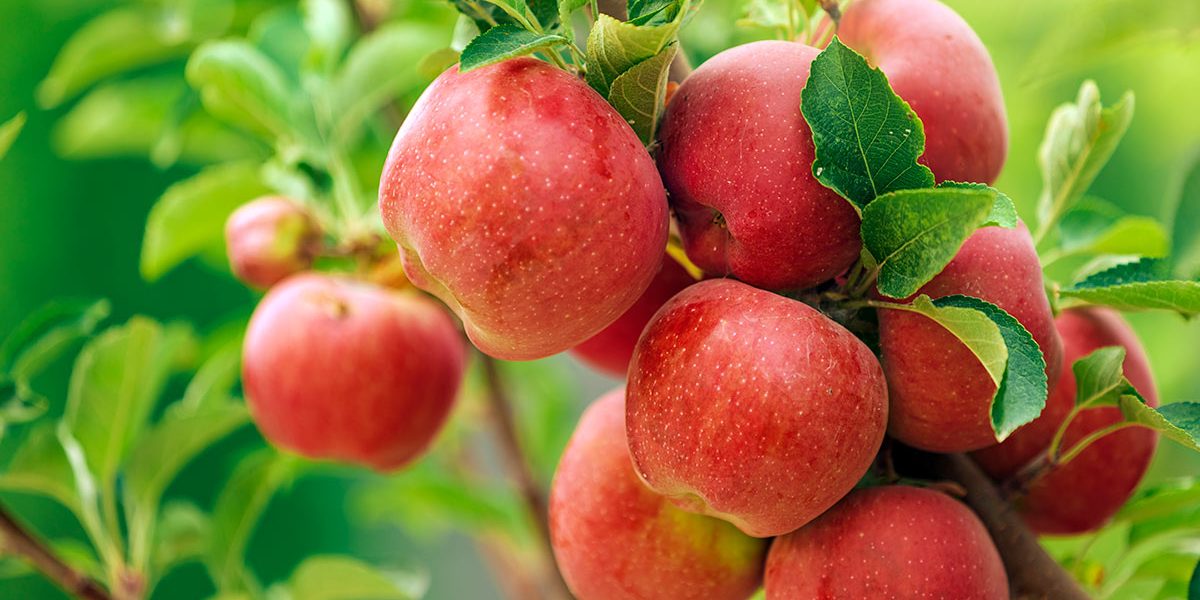Home>Gardening Techniques>Plant Care>How To Espalier Fruit Trees
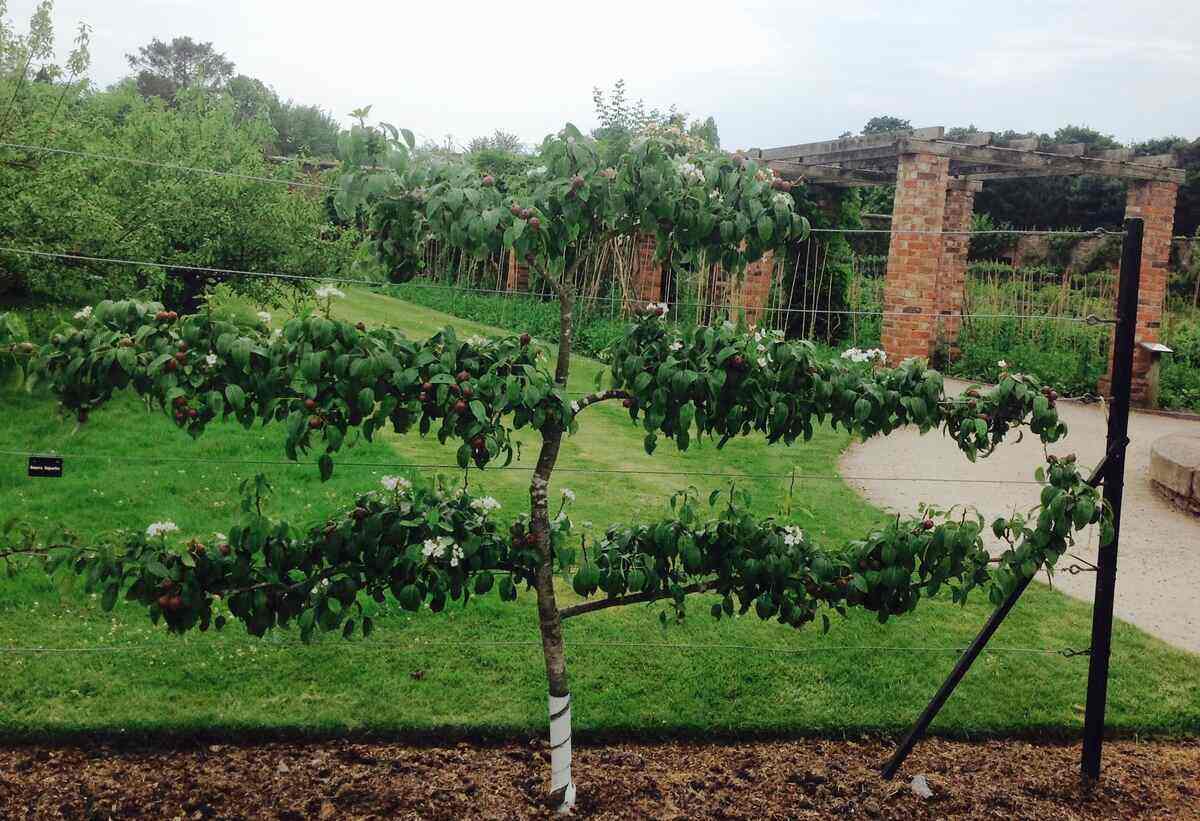

Plant Care
How To Espalier Fruit Trees
Modified: January 22, 2024
Learn the art of espaliering fruit trees and master plant care techniques to maximize your fruit harvest. Find step-by-step instructions and tips here!
(Many of the links in this article redirect to a specific reviewed product. Your purchase of these products through affiliate links helps to generate commission for Chicagolandgardening.com, at no extra cost. Learn more)
Table of Contents
- Introduction
- Benefits of Espaliering Fruit Trees
- Selecting the Right Fruit Trees for Espalier
- Choosing a Suitable Support Structure
- Preparing the Soil and Planting the Fruit Tree
- Pruning and Training Techniques
- Maintenance Tips for Espaliered Fruit Trees
- Common Pests and Diseases and How to Control Them
- Harvesting and Enjoying the Fruits of Your Espaliered Trees
- Conclusion
Introduction
Welcome to the world of espaliered fruit trees! If you’re a gardening enthusiast or someone who simply appreciates the beauty of nature, espaliering fruit trees is a fascinating and rewarding technique to explore. Espaliering is the art of training fruit trees to grow flat against a wall, fence, or trellis, creating a stunning and functional display of edible plants. The tradition of espaliering dates back centuries and has its roots in European gardening practices.
What makes espaliered fruit trees so appealing is not only their aesthetic appeal but also their practical benefits. By training these trees to grow in a particular pattern, you can maximize your gardening space, improve fruit production, and easily manage and maintain the trees. Whether you have a sprawling backyard or a small balcony, espaliered fruit trees are a versatile and efficient solution for adding greenery and fresh fruit to your surroundings.
In this comprehensive guide, we will delve into the world of espaliered fruit trees, exploring the many benefits they offer, the necessary steps to select the right fruit trees, how to choose a suitable support structure, techniques for planting and pruning, and tips for maintenance. We will also discuss common pests and diseases that may affect your trees and how to effectively control them. By the end of this article, you will be equipped with the knowledge and skills to successfully espalier fruit trees and enjoy the bountiful harvest they can provide.
Benefits of Espaliering Fruit Trees
Espaliering fruit trees offers a plethora of benefits that make it an attractive option for gardeners of all skill levels. Let’s explore some of the key advantages:
1. Space Efficiency: Espaliering allows you to maximize the use of limited gardening space. By training fruit trees to grow flat against a wall or trellis, you can save valuable space in your backyard or even create a beautiful fruit-bearing fence.
2. Increased Fruit Production: The careful training and pruning involved in espaliering promote better airflow and sunlight exposure to each branch and bud of the tree. This optimized growing environment results in increased fruit production and higher fruit quality.
3. Easy Maintenance: Espaliered fruit trees are easier to manage and maintain compared to traditional fruit trees. The controlled growth pattern makes it easier to access the tree for pruning, fertilizing, and harvesting. This accessibility also aids in inspecting and treating any potential pest or disease issues.
4. Visual Appeal: Espaliered fruit trees are aesthetically pleasing and can transform your garden or outdoor space into a living work of art. The intricate and symmetrical patterns created by trained branches add a touch of elegance and charm to any setting.
5. Privacy and Windbreak: Espaliered fruit trees can act as natural privacy screens and windbreaks. When planted along a fence or wall, they create a barrier that shields your garden from prying eyes and helps to reduce wind gusts, protecting more delicate plants.
6. Accessibility: The horizontal growth pattern of espaliered trees makes it easier to reach and pick fruits, as they are at a comfortable height for harvesting. This accessibility also aids in monitoring and maintaining the health of the tree.
These benefits make espaliering fruit trees an ideal option for both novice and experienced gardeners. Not only do they provide an abundant harvest of delicious fruits, but they also enhance the visual appeal of any outdoor space. So, let’s dive into the next section and learn how to select the right fruit trees for espaliering.
Selecting the Right Fruit Trees for Espalier
Choosing the right fruit trees is crucial when embarking on your espaliering journey. Not all fruit tree varieties are suitable for espaliering, so it’s important to consider their growth habits, compatibility with your climate, and desired fruit yield. Here are some key factors to consider when selecting fruit trees for espalier:
1. Growth Habit: Look for fruit trees with naturally flexible branches and a manageable growth habit. Varieties that produce long, pliable branches are easier to train into the desired espalier shape. Avoid trees with rigid branches or those that have a tendency to grow vigorously and become unruly.
2. Climate Compatibility: Consider the climate in your region and choose fruit tree varieties that thrive in your specific conditions. Some trees are more tolerant of extreme temperatures, while others require specific chill hours for optimal fruit production. Research local nurseries or consult a gardening expert for advice on the best fruit tree varieties for your area.
3. Fruit Yield: Determine the type and quantity of fruit you want from your espaliered trees. Some varieties are known for their abundant yields, while others may produce fewer fruits but of higher quality. Consider your needs and preferences when selecting fruit trees for espalier.
4. Space Constraints: Take into account the size of your espaliering space. If you have limited vertical space, consider dwarf or semi-dwarf fruit tree varieties that will stay compact and fit well within the designated area. Alternatively, if you have ample vertical space, you can explore larger and more vigorous fruit tree varieties.
5. Multiple Varieties: If you have enough space and desire a diverse range of fruits, you can choose multiple fruit tree varieties for your espalier project. This allows you to enjoy a variety of flavors and harvest periods, adding excitement and diversity to your garden.
Before purchasing your fruit trees, it’s recommended to visit a reputable nursery or consult with local gardening experts for guidance. They can help you select the right varieties that suit your specific needs and provide valuable insights on their care and maintenance. With the right fruit trees in hand, you’re ready to move on to the next section and learn about suitable support structures for espaliered fruit trees.
Choosing a Suitable Support Structure
Once you have selected the appropriate fruit trees for your espalier project, the next step is to choose a suitable support structure. The support structure will provide the framework for training and securing the branches as they grow. Here are some factors to consider when selecting a support structure:
1. Wall: If you have a sturdy and well-built wall, it can serve as an excellent support structure for espaliered fruit trees. Make sure the wall is strong enough to withstand the weight and pressure of the trained branches. Additionally, consider the direction the wall is facing to ensure that the trees receive adequate sunlight.
2. Fence: A fence is another common and versatile support structure for espaliered fruit trees. Choose a fence that is sturdy and durable, capable of supporting the weight of the tree branches. Ensure that the fence is tall enough to accommodate the desired height and width of your espalier.
3. Trellis: Trellises are purposely designed support structures for training and supporting climbing plants, making them ideal for espaliered fruit trees. They can be made from wood, metal, or even wire mesh. Ensure that the trellis is securely anchored into the ground to provide stability and support for the growing branches.
4. Tensioned Wires: For a clean and minimalist look, tensioned wires can be used as a support structure. This approach involves attaching wires parallel to each other and tensioning them between posts or walls. This option is suitable for espaliered trees with a simple horizontal cordon style.
5. Pergola: If you want to create an impressive and striking display of espaliered fruit trees, a pergola can be an excellent choice. The overhead structure of a pergola provides support for horizontal branches and creates a shaded area beneath, perfect for relaxing and enjoying your garden.
When selecting a support structure, consider factors such as the space available, aesthetic preferences, and the number of fruit trees you plan to espalier. In some cases, you may need to combine multiple support structures to accommodate your desired design. Once you have chosen a suitable support structure, it’s time to prepare the soil and plant your fruit tree, which we will explore in the next section.
Preparing the Soil and Planting the Fruit Tree
Before you can begin planting your espaliered fruit tree, it is important to prepare the soil to create the ideal growing conditions. Healthy soil provides the necessary nutrients and drainage for the tree to thrive. Here are the steps to prepare the soil and plant your fruit tree:
1. Choose the Right Location: Select a location that receives adequate sunlight for the specific fruit tree variety you have chosen. Ensure that the area has proper drainage to prevent waterlogging, as excessive moisture can lead to root rot. Clear any weeds or grass from the planting area.
2. Soil Testing: Conduct a soil test to determine its pH level and nutrient content. This will help you make any necessary amendments to ensure the soil is suitable for your fruit tree. Soil pH should ideally be between 6.0 and 7.0 for most fruit trees, but specific varieties may have different preferences.
3. Amend the Soil: Based on the soil test results, amend the soil with organic matter such as compost or well-rotted manure to improve its fertility and overall structure. This will provide essential nutrients and enhance moisture retention.
4. Dig the Planting Hole: Dig a planting hole that is slightly wider and deeper than the root ball of your fruit tree. Gently loosen the roots before planting to encourage healthy root growth. Place your tree in the hole, ensuring that it is planted at the same depth it was in the container or nursery.
5. Backfill and Water: Backfill the planting hole with the amended soil, gently firming it around the roots to remove any air pockets. Water the newly planted tree thoroughly to settle the soil and hydrate the roots.
6. Provide Support: If necessary, install any support systems, such as stakes or ties, to help the tree establish itself and stay upright. These supports should be removed once the tree becomes strong enough to stand on its own.
7. Mulch: Apply a layer of organic mulch, such as wood chips or straw, around the base of the tree. This helps conserve moisture, suppress weeds, and regulate soil temperature.
After planting, it is crucial to provide regular watering, especially during the tree’s establishment period. Monitor the soil moisture and adjust watering accordingly. In the next section, we will discuss the essential pruning and training techniques for shaping your espaliered fruit tree.
Pruning and Training Techniques
Pruning and training are essential techniques for shaping and maintaining the desired form of your espaliered fruit tree. These practices help control the tree’s growth, promote fruit production, and maintain its architectural beauty. Here are some pruning and training techniques to consider:
1. Initial Pruning: After planting, it’s important to prune the tree to establish the framework for espaliering. Remove any excess branches and choose the primary branches that will form the desired shape, such as a cordon, fan, or lattice. Prune back lateral branches to encourage growth along the main branches.
2. Training the Branches: As the tree grows, carefully train the branches along the support structure, using ties or twine to secure them in place. Gently bend and manipulate the branches into the desired shape, making sure to space them evenly along the support system.
3. Regular Pruning: Conduct routine pruning during the dormant season to maintain the desired shape and encourage fruit production. Remove any dead, damaged, or diseased branches. Thin out crowded areas to improve airflow and sunlight penetration.
4. Branch Selection: Keep an eye on the growth of new branches and select those that align with the desired espalier form. Prune away any vertical or undesirable branches that disrupt the trained pattern. It’s important to maintain a balance between new growth and established branches.
5. Summer Pruning: In addition to winter pruning, summer pruning is also beneficial for shaping and controlling growth. This involves selectively pruning back new growth to maintain the desired shape and remove excessive vigor.
6. Fruit Spur Management: Some fruit trees produce fruit on short, stubby growths known as spurs. As your espaliered tree matures, encourage the formation and management of fruit spurs along the main branches. Prune back long, unproductive shoots to redirect energy into fruit production.
7. Renewal Pruning: Over time, some branches may become less productive. Conduct renewal pruning by removing old or non-productive branches and encouraging new growth to take their place. This helps maintain a healthy and productive tree.
Remember to use clean and sharp pruning tools to make clean cuts and minimize damage to the tree. It’s also important to keep an open eye for any signs of pests or diseases and promptly address them. With proper pruning and training, your espaliered fruit tree will flourish and become a stunning centerpiece in your garden or outdoor space.
Maintenance Tips for Espaliered Fruit Trees
Maintaining your espaliered fruit trees is essential for their health, productivity, and overall appearance. With proper care and attention, you can ensure that your trees continue to thrive and provide you with abundant harvests. Here are some maintenance tips to keep in mind:
1. Regular Watering: Espaliered fruit trees have a more limited root system due to their training and compact growth. Therefore, it’s important to provide regular and consistent watering to keep the soil evenly moist. Avoid overwatering, as this can lead to root rot, but also prevent the soil from drying out completely.
2. Fertilization: Apply a balanced fertilizer formulated for fruit trees in early spring, just before new growth begins. Follow the manufacturer’s instructions for the appropriate amount and application method. Fertilizing helps provide essential nutrients to promote healthy growth and fruit production.
3. Weed Control: Keep the area around your espaliered fruit trees free from weeds. Weeds compete with the trees for nutrients and moisture, and can also harbor pests and diseases. Regularly remove any weeds and apply a layer of mulch to suppress their growth.
4. Monitor for Pests and Diseases: Regularly inspect your espaliered fruit trees for any signs of pests or diseases. Look for curled leaves, discoloration, spots, or any other abnormalities. Consult with a local gardening expert or extension service to identify and address any issues. Consider using organic pest control methods whenever possible to minimize the impact on beneficial insects and the environment.
5. Protection from Extreme Weather: During extreme hot or cold weather, provide shade or protection to your fruit trees. Use shade cloth or other coverings to shield them from scorching sun or frost. This will help prevent stress and damage to the tree.
6. Pruning and Training Maintenance: Conduct regular pruning and training maintenance to ensure the tree maintains its desired shape and form. Remove any new growth that deviates from the trained pattern, prune for proper airflow and light penetration, and manage the fruit spurs as needed.
7. Harvesting and Thinning: Harvest ripe fruits promptly to prevent overripening or damage. Thinning excess fruit can improve fruit size and overall quality. Remove any damaged, diseased, or malformed fruits to maintain tree health.
8. Winter Protection: In colder climates, provide winter protection for your espaliered fruit trees. Use burlap or other materials to wrap the tree and insulate it from harsh winds and freezing temperatures. This will help prevent winter damage and ensure a healthy spring emergence.
By following these maintenance tips, you can ensure that your espaliered fruit trees remain healthy, productive, and visually stunning. With proper care and attention, your trees will continue to thrive and provide you with a bountiful harvest for years to come.
Common Pests and Diseases and How to Control Them
Like any other fruit trees, espaliered fruit trees are susceptible to a variety of pests and diseases. Being aware of these common issues and knowing how to effectively control them is crucial for maintaining the health and productivity of your trees. Here are some of the most common pests and diseases you may encounter, along with methods of control:
Pests:
1. Aphids: These tiny insects can cause damage by sucking sap from the leaves and tender shoots of your fruit tree. Regularly inspect the undersides of leaves and use insecticidal soap or neem oil to control infestations.
2. Codling Moths: Codling moths lay their eggs on the fruit, and the resulting caterpillars feed on the flesh, causing damage and ruining the fruit. Use pheromone traps and apply appropriate insecticides or organic control methods at the appropriate time to reduce infestation.
3. Spider Mites: Spider mites are tiny pests that feed on the sap of leaves, causing discoloration and leaf drop. Regularly spray your trees with water to dislodge them, and use insecticidal soap if necessary.
4. Fruit Flies: Fruit flies are attracted to ripe and rotting fruit, laying their eggs on the surface. Use bait traps or covers to prevent infestation, and promptly remove and dispose of fallen or damaged fruit.
Diseases:
1. Fire Blight: Fire blight is a bacterial disease that affects branches and blossoms, causing wilting and blackened, scorched-looking tissues. Prune out infected branches during the dormant season and use bactericidal sprays to control the disease.
2. Apple Scab: Apple scab is a fungal disease that causes dark, scaly lesions on leaves, fruit, and twigs. Apply fungicidal sprays in early spring and late summer to prevent and control the disease.
3. Peach Leaf Curl: This fungal disease affects peach and nectarine trees, causing red, curled leaves in spring. Apply a dormant spray in late winter or early spring before bud break to control the disease.
4. Powdery Mildew: Powdery mildew is a common fungal disease that appears as a white, powdery coating on leaves, shoots, and fruit. Use fungicidal sprays and improve airflow by pruning and thinning to reduce the risk of infection.
It’s important to regularly inspect your espaliered fruit trees for signs of pests or diseases. Early detection and prompt action are key to effectively controlling and managing these issues. Additionally, practicing good cultural care, such as proper pruning and watering techniques, can help improve the overall health and resilience of your trees, making them less susceptible to pests and diseases.
If you’re unsure about the specific pests or diseases affecting your fruit trees, consult with a local gardening expert or extension service for proper identification and tailored control methods. Remember to always follow the instructions on any pesticides or fungicides you use, and consider using organic or biological control methods whenever possible to minimize the impact on beneficial insects and the environment.
By being proactive in pest and disease management, you can ensure that your espaliered fruit trees remain healthy and continue to thrive, providing you with an abundant and blemish-free harvest.
Harvesting and Enjoying the Fruits of Your Espaliered Trees
After all the hard work of caring for your espaliered fruit trees, the moment of reward finally arrives – harvest time! Harvesting your own homegrown fruits is not only satisfying but also allows you to enjoy the fresh flavors and nutritional benefits that only freshly picked fruits can offer. Here are some tips for harvesting and enjoying the fruits of your espaliered trees:
1. Monitor Ripeness: Regularly monitor your fruit trees and observe the color, texture, and aroma of the fruits. Each fruit variety has different indicators of ripeness, so learn about the specific signs for the fruits you are growing. Proper timing ensures optimal flavor and sweetness.
2. Handpick Ripe Fruits: Carefully handpick ripe fruits directly from the tree. Gently twist or cut the stem close to the fruit to avoid damaging the tree or surrounding branches. Handle the fruits with care to prevent bruising or puncturing.
3. Harvest in Small Batches: Depending on the size of your espaliered trees and the quantity of fruit produced, it may be necessary to harvest in multiple sessions. This allows you to enjoy fresh fruits over a longer period and prevents overburdening the tree with excessive weight.
4. Storage and Preservation: If you have an abundance of fruit and can’t consume it all at once, consider different storage and preservation methods. Some fruits can be refrigerated, while others are best stored in a cool, dry place. You can also freeze, can, or make delicious preserves and jams to enjoy throughout the year.
5. Share with Others: If you have more fruit than you can handle, consider sharing your bounty with friends, family, or local food banks. Sharing the fruits of your labor not only spreads joy but also helps reduce food waste and fosters community connections.
6. Taste and Savor: Once you’ve harvested your fruits, take the time to savor each bite. Enjoy the fresh, juicy flavors and appreciate the hard work and dedication that went into growing them. Experiment with different culinary creations, such as fruit salads, pies, smoothies, or simply enjoy them as a healthy snack.
7. Appreciate the Beauty: Espaliered fruit trees not only provide delicious fruits but also offer a visually stunning display in your garden or outdoor space. Take a moment to appreciate the beauty and artistry of the trained branches and lush foliage. It’s a testament to your gardening skills and creativity.
Remember that the taste and quality of homegrown fruits surpass those found in most grocery stores. By growing your own espaliered fruit trees, you have the opportunity to experience the joy of harvesting and savoring fruits at the peak of freshness. Enjoy the fruits of your labor and revel in the beauty and flavors provided by your espaliered trees!
Conclusion
Embarking on the journey of espaliering fruit trees opens up a world of possibilities in your garden or outdoor space. With its space-efficient design, aesthetic appeal, and improved fruit production, espaliering is a technique that offers numerous benefits. By selecting the right fruit trees, choosing a suitable support structure, and following proper planting, pruning, and maintenance techniques, you can create a stunning display of espaliered fruit trees that not only beautify your surroundings but also bear delicious, homegrown fruits.
Throughout this comprehensive guide, we have explored the various aspects of espaliering, from understanding the benefits and selecting the right fruit trees to choosing suitable support structures and maintaining healthy trees. We have also discussed common pests and diseases that may affect your espaliered trees and provided guidance on how to control them effectively. Additionally, we’ve explored the joy of harvesting and savoring the fruits of your labor.
As you embark on your own espaliering journey, remember to apply your newfound knowledge, be patient, and adapt techniques to suit the specific needs of your chosen fruit trees. Embrace the creativity and artistic nature of espaliering, knowing that each trained branch is a testament to your skill and dedication as a gardener.
Now, it’s time to roll up your sleeves, get your pruning shears ready, and embark on the fulfilling journey of espaliering fruit trees. Enjoy the process, reap the rewards, and savor the bountiful harvests that your espaliered trees will provide for years to come. Happy gardening!
